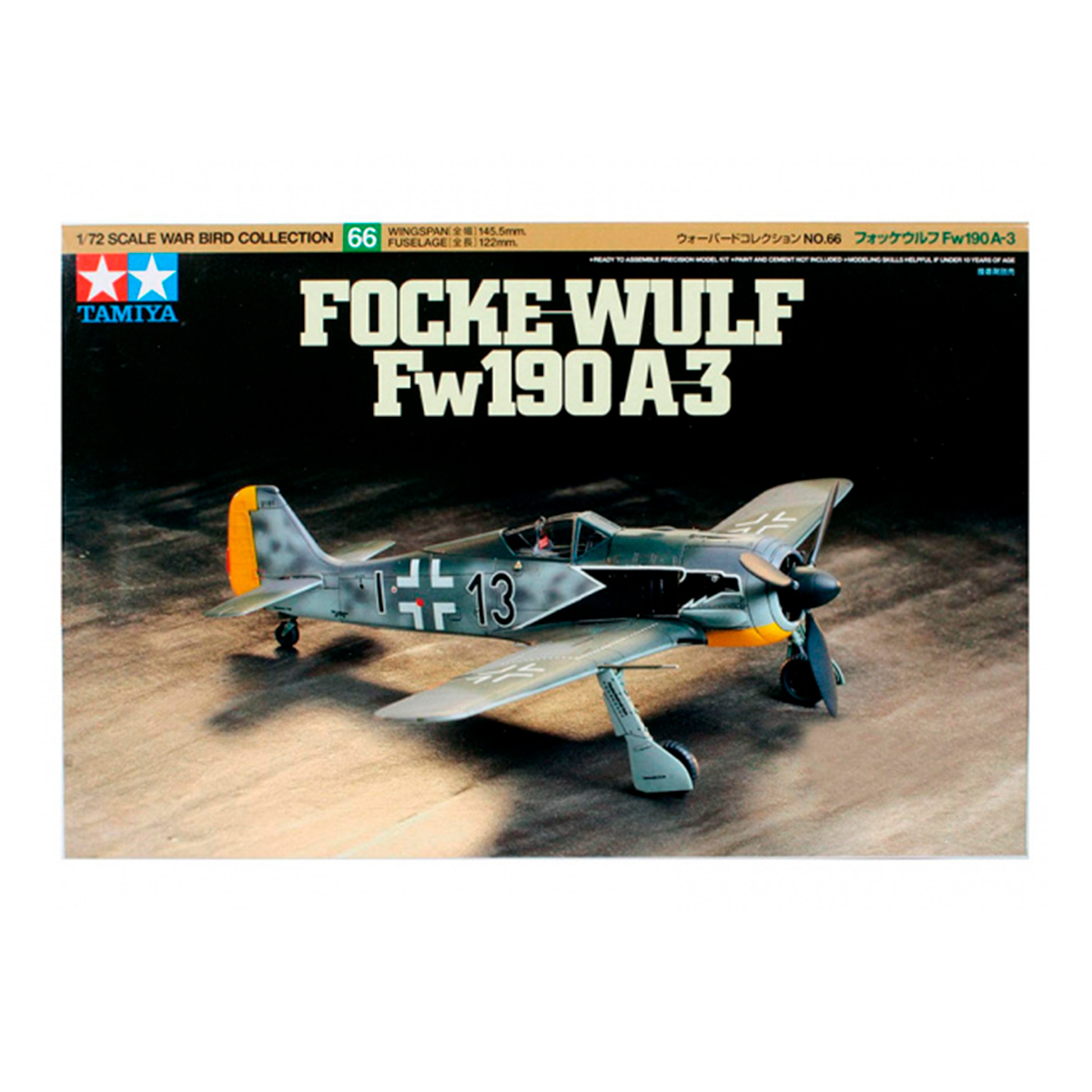1/72 Focke-Wulf Fw190 A-3
12,50€
In stock

*Please check our Privacy Policies to see how to we use your personal data.
*Por favor revisa nuestra Política de Privacidad para ver como tratamos tus datos personales
Development of the FW190 series began in the Autumn of 1937, under a contract issued by the Reichsluftfahrtministerium (Air Ministry) for a single seat fighter to supplement the Messerschmitt Bf109. Two proposals were submitted by Kurt Tank, the technical director of the Focke-Wulf Flugzeugbau (aircraft factory). The proposal using the then new BMW 801 aircooled radial engine was chosen. This tough and powerful engine was placed in a robust airframe and provided superb handling, well balanced control, and brisk acceleration. It entered service in 1941, flying alongside the Bf 109 and it soon took control of air superiority over the English Channel. Establishing itself as a mainstay fighter of the Luftwaffe, it outperformed the contemporary Spitfire Mk.V’s in almost every respect and maintained this advantage until the arrival of the Spitfire IX in July 1942. The Fw190 fighter underwent constant improvement throughout its life. The A-3 version used the improved BMW 801Dg engine that produced 1,700hp. Armament was increased from four to six guns, consisting of two rapid firing MG151’s in the wing roots; two MG FF’s outboard of the landing gear and two fuselage mounted MG 17 machine guns. Throughout WW2, many Luftwaffe squadrons allowed personal pilot markings and distinctive squadron insignia to be used, plus lower cowl, wing tip and rudder color additions to the original paint schemes.
El desarrollo de la serie FW190 comenzó en el otoño de 1937, en virtud de un contrato emitido por el Reichsluftfahrtministerium (Ministerio del Aire) para un caza de un solo asiento para complementar el Messerschmitt Bf109. Kurt Tank, director técnico de Focke-Wulf Flugzeugbau (fábrica de aviones) presentó dos propuestas. Se eligió la propuesta que utilizaba el entonces nuevo motor radial refrigerado por aire BMW 801. Este motor resistente y potente se colocó en una estructura robusta y proporcionó un manejo excelente, un control bien equilibrado y una aceleración rápida. Entró en servicio en 1941, volando junto al Bf 109 y pronto tomó el control de la superioridad aérea sobre el Canal de la Mancha. Estableciéndose como un luchador principal de la Luftwaffe, superó al Spitfire Mk.V contemporáneo en casi todos los aspectos y mantuvo esta ventaja hasta la llegada del Spitfire IX en julio de 1942. El caza Fw190 experimentó una mejora constante a lo largo de su vida. La versión A-3 utilizó el motor BMW 801Dg mejorado que producía 1.700 CV. El armamento se incrementó de cuatro a seis cañones, que consisten en dos MG151 de disparo rápido en las raíces de las alas; dos MG FF fuera de borda del tren de aterrizaje y dos ametralladoras MG 17 montadas en el fuselaje. A lo largo de la Segunda Guerra Mundial, muchos escuadrones de la Luftwaffe permitieron el uso de marcas de piloto personales e insignias distintivas de escuadrón, además de adiciones de color en la cubierta inferior, la punta del ala y el timón a los esquemas de pintura originales.





 Request of SDS product data file / Product security
Request of SDS product data file / Product security